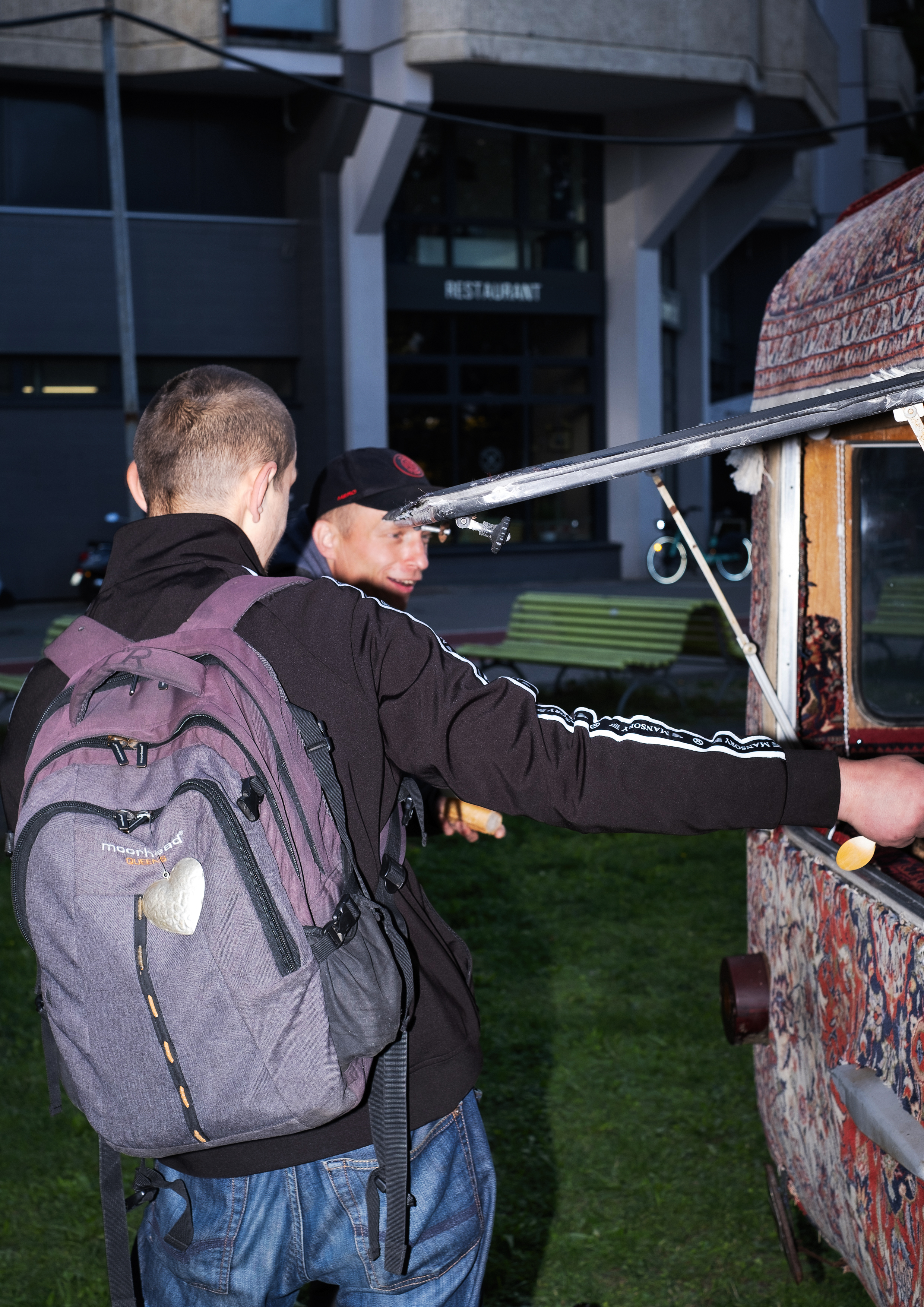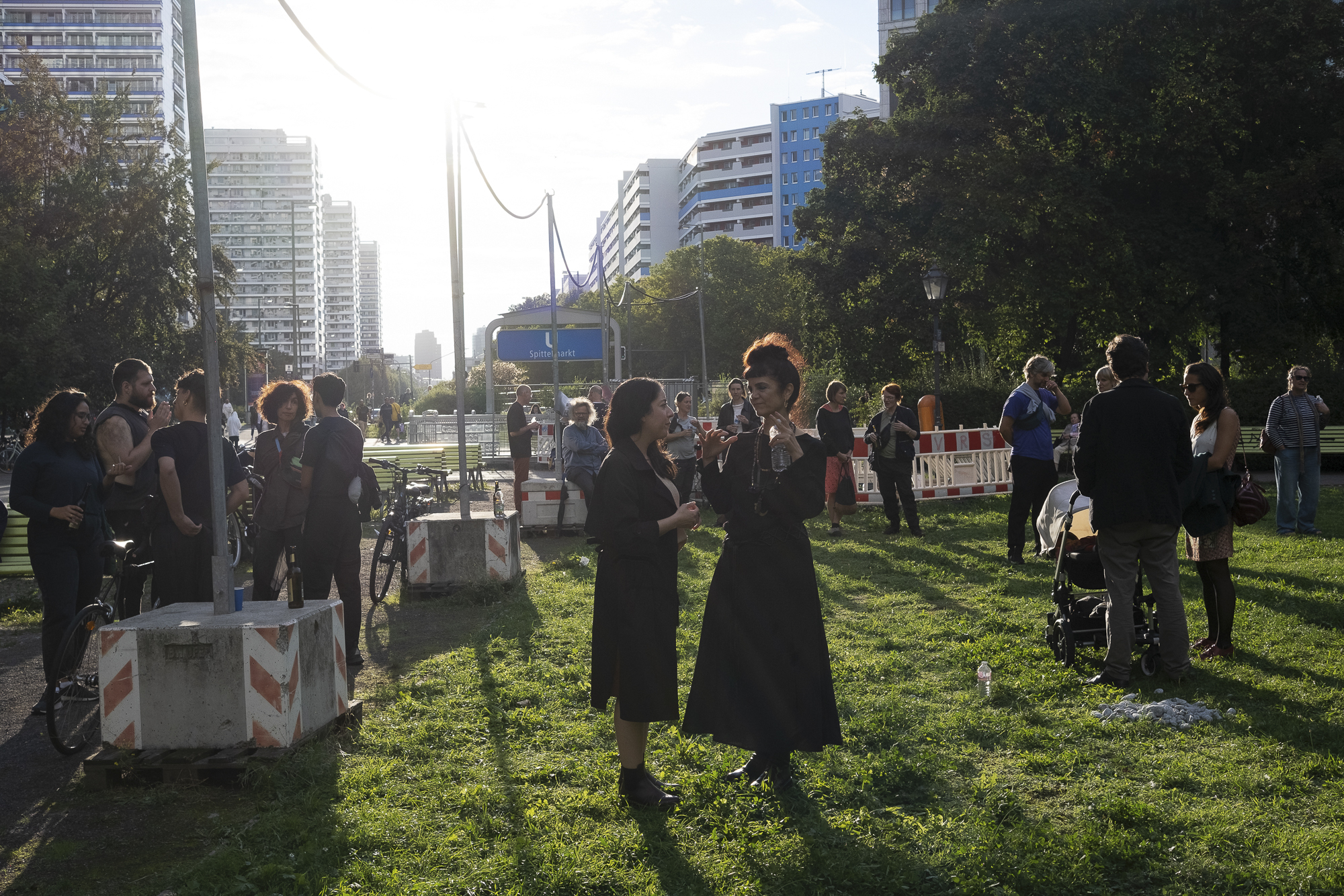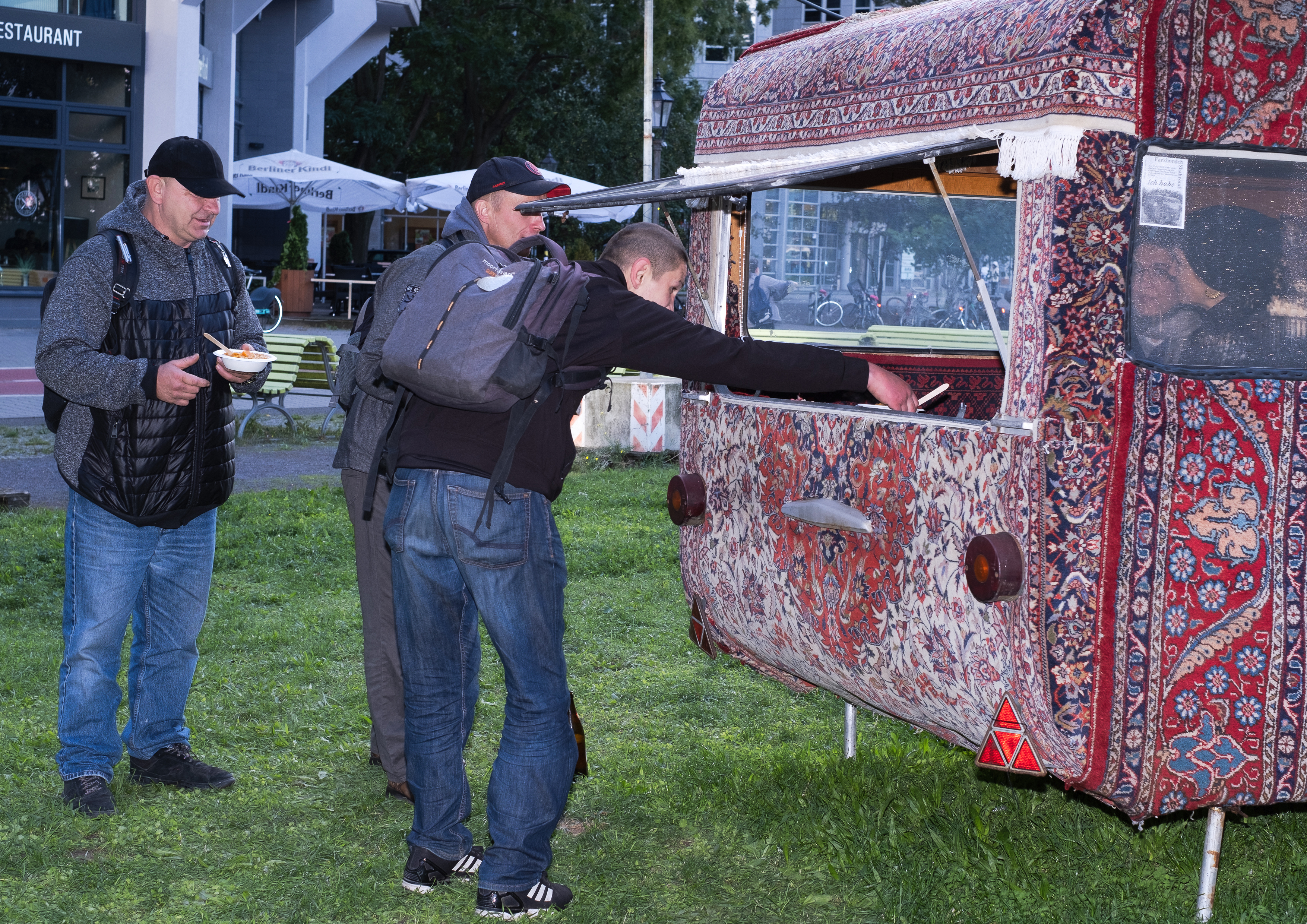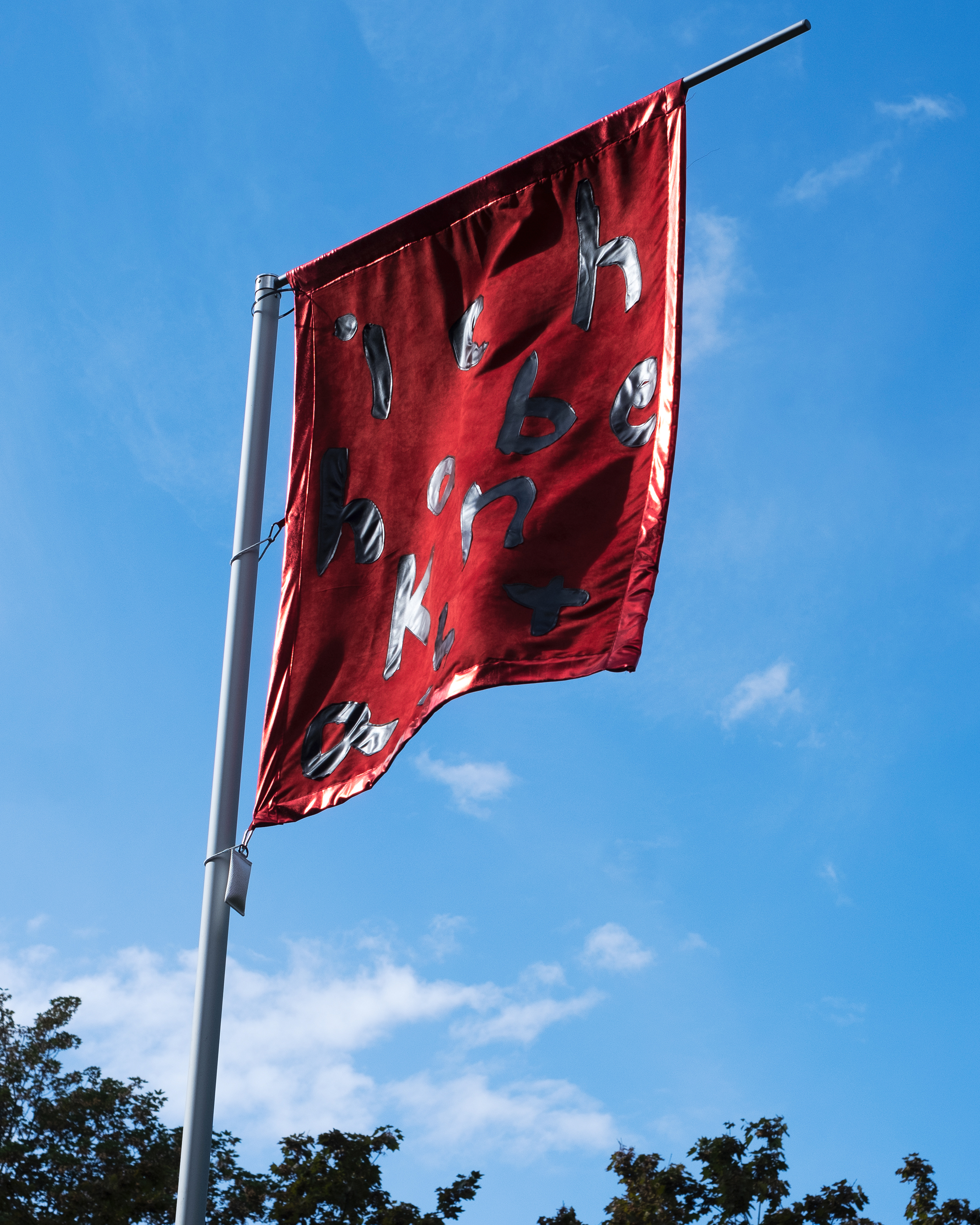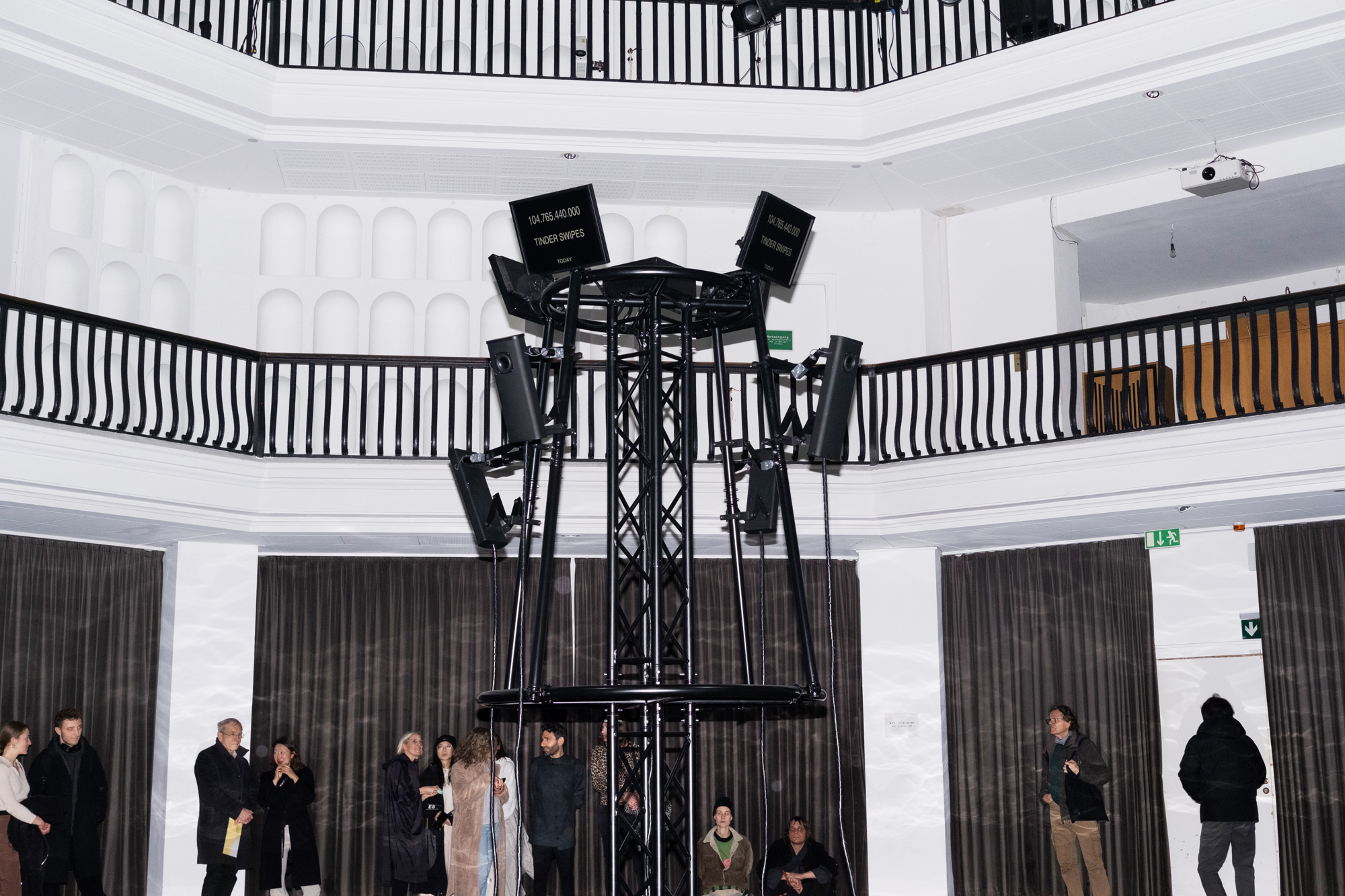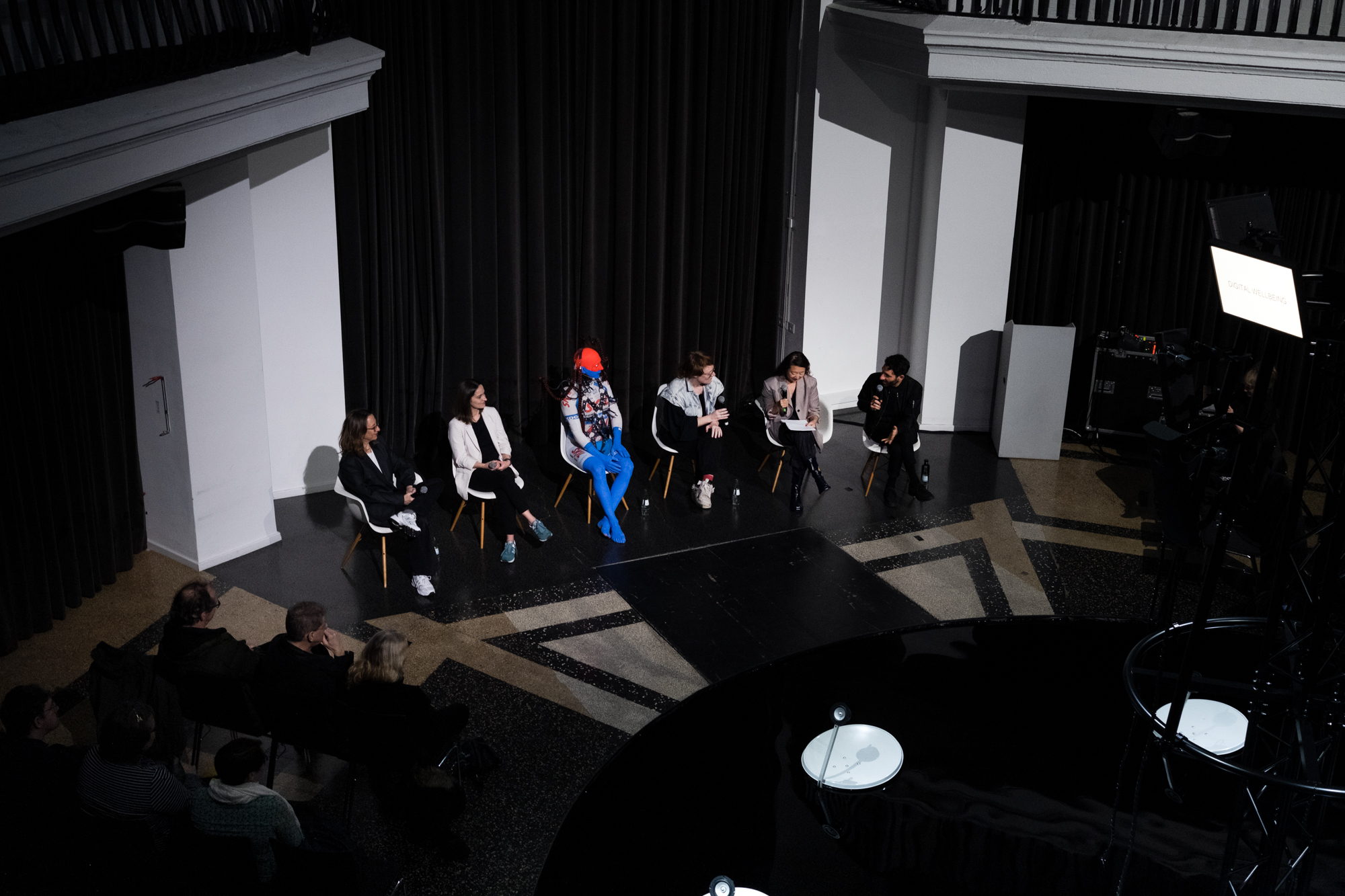Speaking to Ancestors (2022-2023)
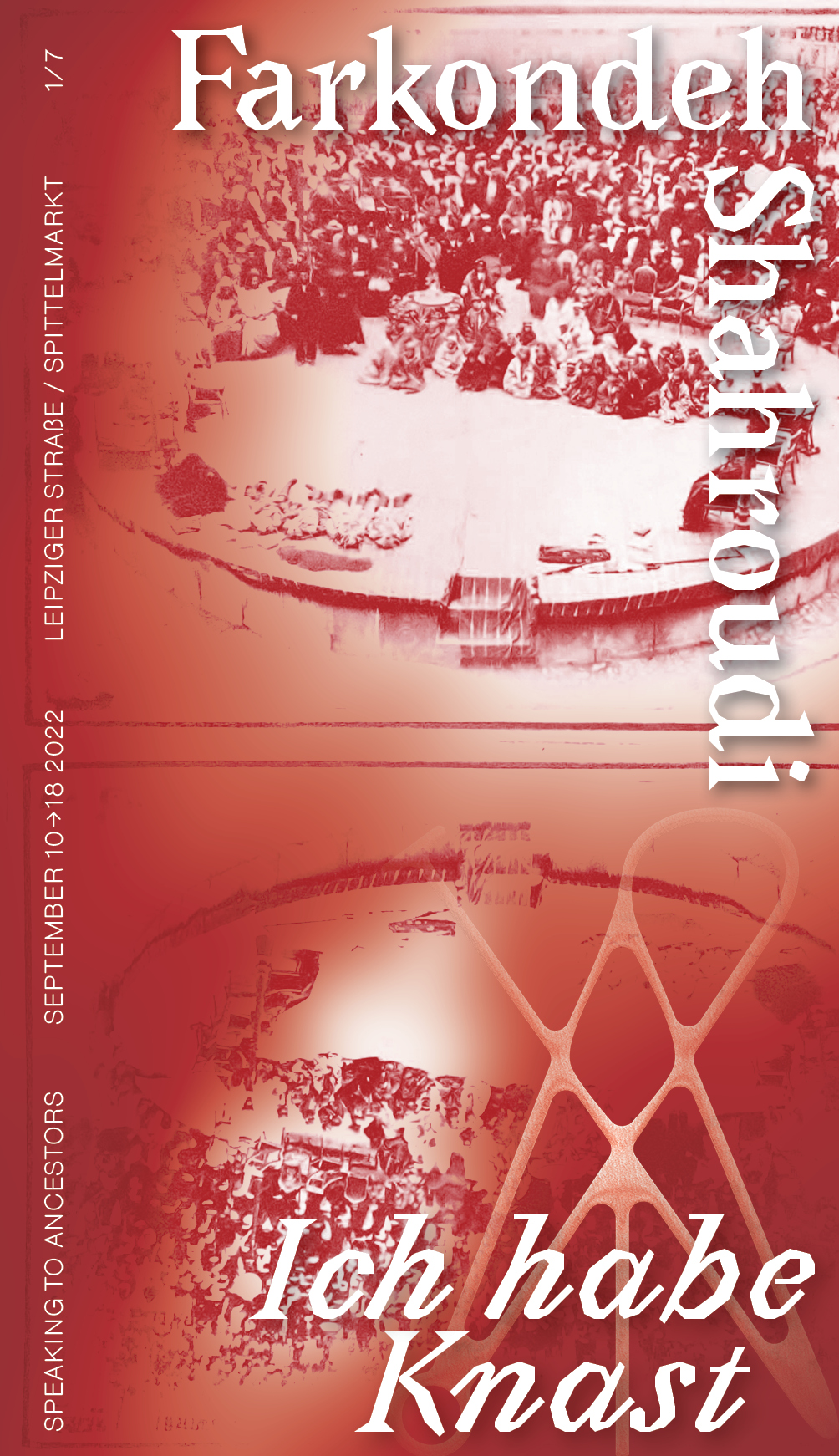


1. Ich habe Knast
by Farkhondeh Shahroudi
An exhibition of social art actions at Spittelmarkt
Opening: September 10th 2022 with the performance “sang zani”
Exhibition duration: September 11→18th 2022
Location: Leipziger Straße / Spittelmarkt Berlin (directly adjacent to the Spittelmarkt subway station)
Wednesday: 14.09.2022, 11h, book reading for children; María Berríos reads In the Jungle There Is Much to Do (ES/DE).
Friday: 16.09.2022, 11h→16h & Saturday: 17.09.2022, 11h→16h
Gülüzar, Soup Kitchen for the Homeless and Those Who Are Hungry
Gülüzar, Soup Kitchen for the Homeless and Those Who Are Hungry
Gülüzar is for the nomads who wish to be sedentary. Gülüzar is for those who do not have a roof over their head but who would like to have a mobile roof terrace in their head. Gülüzar is for those who desire flowers. Gülüzar is for those who travel from pasture to pasture and all those who have flowers to smell. For those who want to go to paradise, for the outsiders. →Farkhondeh Shahroudi
Farkhondeh Shahroudi’s works weave relationships between writings and images, bodies and narratives. Inspired by poetry, memories of her homeland Iran and of her everyday life in Germany, the artist’s works tell of language and speechlessness and evoke the unspoken. Her work addresses translocal movements of people who are at the mercy of others, uprooted or outsourced, moving between places and worlds as if in a play. Many figures in Shahroudi’s work are inspired by her early memories of traditional Iranian theater, “Ta’ziyeh,” in which actors, spectators and animals blur into one on the street. Images, bodies and narratives are transformed by the artist’s handwriting, sewing and weaving, using diverse materials to create a synthetic universe that oscillates between social and asocial, political and intimate, inside and outside and language and illegibility.
In the midst of Berlin’s urban space at Spittelmarkt, Shahroudi presents her new installation “Gülüzar” (2022). Gülüzar (Persian and Turkish for flower meadow) is a mobile caravan, covered with different carpet fragments, whose motifs refer to Persian paradise gardens. Over the course of the exhibition, the artist will operate this mobile garden as a heterotopian space, as a soup kitchen for the hungry and those in need. Next to the installation she presents her “Anti-Flag” (2022) as a warning against ideology, belonging and territorial demarcation.
For the exhibition site—Spittelmarkt—she has selected the phrase “Ich habe Knast,” a colloquial expression once common in East Germany meaning “I’m hungry.” This expression, which actually has nothing to do with “jail” (Knast in German), alludes to the scarcity of food in prison. By using this East German expression, the artist transforms her personal story—as a political asylum seeker in the 90s in Germany—and opens a space for the stories of other oppressed people. This is a collective memory space, which is perceived performatively and poetically through the interaction with Gülüzar.
It refers to the history of the Spittelmarkt as a quarter for wayfarers and craftsmen. The former “Siechenhaus,” originally established for those in need, later became the “Gertraudenhospital.” In the GDR era, Spittelmarkt was the urban center of East Berlin; since the fall of the Berlin Wall, it has developed into a transportation hub and a neighborhood where different social milieus co-exist.
The exhibition opens with her performance, “sang zani” (Iranian for knocking stones) (2022), in which the audience and neighborhood residents are invited to knock two stones against each other to create rhythms. “sang zani” is a performative adaptation of the Shiite mourning ceremony “daste gardani” and the tradition of Iranian theater “ta’ziyeh,” in which people gathered to lament injustices.
As part of her social art actions, Shahroudi also invites young audiences to read the children’s book “En la selva hay mucho por hacer” (In the Jungle There Is Much to Do), written by Mauricio Gatti, who was imprisoned in 1971 for being a member of an anarchist resistance movement in Uruguay. The book tells of animals captured by a hunter and imprisoned in the city zoo, where they begin to plan their escape. It is an anarchist fable and a coloring book suitable for all ages. María Berríos, writer, curator and co-editor of the book, will conduct a public reading in both Spanish and German together with Shahroudi.

2. Rituals of Wasted Technology
by Marco Barotti
Location: Kuppelhalle, Silent Green
Gerichtstraße 35, 13347 Berlin
Opening: January 11, 2023, at 6pm
Exhibition duration: January 12→15, 2023, from 12pm→7pm
Panel discussion: January 14, 2023, at 4pm
Speakers: aLifveForms (cared for by JP Raether), Dr. Asia J. Biega, Prof. Dr. Dorothea von. Hantelmann
In market-driven cycles of planned obsolescence, technological communication products are regularly replaced by better, faster and smarter successors. Televisions, satellite dishes, PCs, smartphones and antennas are produced and consumed before ending up in landfill mountains of abandoned tech waste. Marco Barotti disrupts this cycle by giving former satellite dishes and recycled Wi-Fi sector antennas a novel tech life. He creates post-apocalyptic landscapes in which the animal world exists as an electronic replica, as described by Philip K. Dick in his 1969 book Do Androids Dream of Electric Sheep?
In his installations, audio technology and e-waste form kinetic sculptures triggered by data inputs, which are analyzed and translated into sound. His works creates a “tech ecosystem” that plays with technology’s similarities to animals and plants. In minimalist bodies, data transcends the boundaries of visibility and manifests itself in alien yet somehow familiar kinetic beings.
In the domed hall of Silent Green, Marco Barotti presents an expansive sound installation consisting of APES & SWANS. Both species symbiotically relate to each other: APES are sound sculptures made of recycled Wi-Fi sector antennas. They are driven by algorithms showing dynamic counters of data consumption and cyber-attacks: from Facebook likes, Google searches, tinder swipes, internet energy consumed, and emails sent, to the adverse cyber events happening in real-time. By encoding these algorithms, his tower-mounted APES gain the ability to generate specific behaviour patterns, quasi-rituals. Barotti’s SWANs, on the other hand, “float” on an artificial pool in the domed hall. They are made of used satellite dishes. Two sound sources – a bass frequency and human breath- streaming through brass instruments give them their voice and set them in motion.
Driven by interdisciplinary research on data science, surveillance capitalism, cyber security, connectivity, human and non-human behaviour, and cryptology in cooperation with the scientists of CASA – Horst Görtz Institute for IT Security Ruhr-Universität Bochum, Marco Barotti’s work questions whether we, as a society, are ready to act as intelligently as the machines we created. Can the new, digital evolution guide us toward a respectful and sustainable cohabitation with our fellow humans, the planet, and other species?
The exhibition “Rituals of Wasted Technology” will feature lectures by aLifveForms (cared for by JP Raether), Asia Biega, and Dorothea von Hantelmann, followed by roundtable discussions with artist Marco Barotti and exhibition curators Pauline Doutreluingne and Keumhwa Kim. They will ask how technologies affect the rituals of our everyday lives and how they influence artistic exhibition practices. For Byung Chul Han, “rituals are symbolic techniques of making oneself at home in the world.” Rituals strengthen community by facilitating collective experiences of closure, transition, celebration, and grief. On a neurological level, the repetition of ritual acts alters neurological processing, increasing human attention span and long-term memory. Our current epoch is marked by a decline in ritual behavior, as we have always known it. How can new collective rituals be created to better live in our contemporary, digital context?
3. The Unloved Ones
by Dan Lie
Location: Zwingli Church, Rudolfstraße 14, 10245 Berlin
Opening: May 13, 2023, at 6pm
Exhibition duration: May 13→ June 10, 2023
Tuesdays→Saturdays, from 12pm→7pm (except Thursdays)
Guided Tour with Daniel Lie, followed by Finissage: June 10, 2023, 5pm
Dan Lies work is inspired by the span of a lifetime and the duration and states of the elements—from the oldest and most affective memories, involving family and personal stories, to memories that objects transport across great distance and time.
In the interdisciplinary exchange between ecology, archaeology and ancestor worship, their work questions Western science and religion and the binary thought structures imposed by them. More recently, forms of mourning and commemoration have been added, as well as processes of collective healing.
With the expansive installation The Unloved Ones, Lie responds to the architecture and history of the Zwingli Church in Berlin, Friedrichshain, as part of the exhibition series Speaking to Ancestors. Founded in 1908, the church has undergone many transformations since the division and reunification of Berlin, from usage of temporary archives to youth clubs. Today, it functions as a social space where culture, neighbourhood and care is practiced, as well as a church where religious services and church festivities take place. These multifaceted connotations become reference points for the artistic reflection on political power structures and beliefs that can be found in sacred as well as profane spaces.
The Unloved Ones consists of sculptural units of turmeric-dyed fabrics recycled from Lie’s previous work, Grieving Secret Society (2022, 58th Carnegie International, Carnegie Museum of Art). This kind of recycling is an ongoing interaction in which Lie connects spaces and forms of mourning and remembering. Inspired by the Bronze Age offering well Lie encountered while researching indigenous rituals in Berlin, they explored healing and intoxicating pre-Christian rituals. The sacrificial well, which was discovered by archaeologists in 1958 in Berlin-Lichterfelde, is supposed to prove with its contents, traces of cultivated and wild plants on healing, intoxicating effect of the Bronze Age cultic events and its special connection to the transcendental.
Lie’s textile works float above the pews on a centered level. The knotted textile sculptures, sewn in various shapes, some filled with earth and medicinal herbs, contrast the rigidity of the altar and the patriarchal figures of the neo-Gothic church with their fluid, plural forms. The Unloved Ones is a choreography of abstract groups of figures far from pictorial representations, from forgotten myths and marginalized religions that were forgotten, repressed, and politically mystified (or misused) with the advent of Christianity.
By making visible materials that are always in transformation, conditioned by their performative properties – time, transience, and presence – Lie’s works underscore the intimate yet expansive coexistence of beings, and address our ongoing participation in the processes of living, dying, and decaying. The energy of these transformations unfolds through the scent of herbs, the smell of earth, and the changing natural color of turmeric when exposed to light. In this interplay, visitors and users of the Zwingli Church are invited to become part of the installation in which different entities and “The Unloved Ones” co-exist.
The Zwingli Church, built in 1908, is a listed building in the Friedrichshain district of Berlin. The church’s pictorial program refers to the Reformation: the chancel is surrounded by marble statues of the two patrons of the Reformation: the Swedish king, Gustav Adolf and the Elector Joachim II, who introduced the Reformation in Brandenburg; the six-meter-high altarpiece shows Christ striding on the sea. The church survived the Second World War almost unscathed and much of it is still in its original condition. After the Berlin Wall was built in 1961, the church was no longer used for church services. Between 1978 and 1993, the building served as an archive for the Berlin State Library. From 1993 to 1995, the church was renovated and used again by the Protestant community. Today the church belongs to the Protestant parish Boxhagener-Stralau of the church district Berlin Stadtmitte, it is used by the association KulturRaum Zwingli-Kirche for exhibitions and cultural events. They not only offer a cultural program but the church is also used as a place to host soup kitchen events for homeless people and regular meetings for the AA community. On Sundays, the church provides a platform for the African church community.

